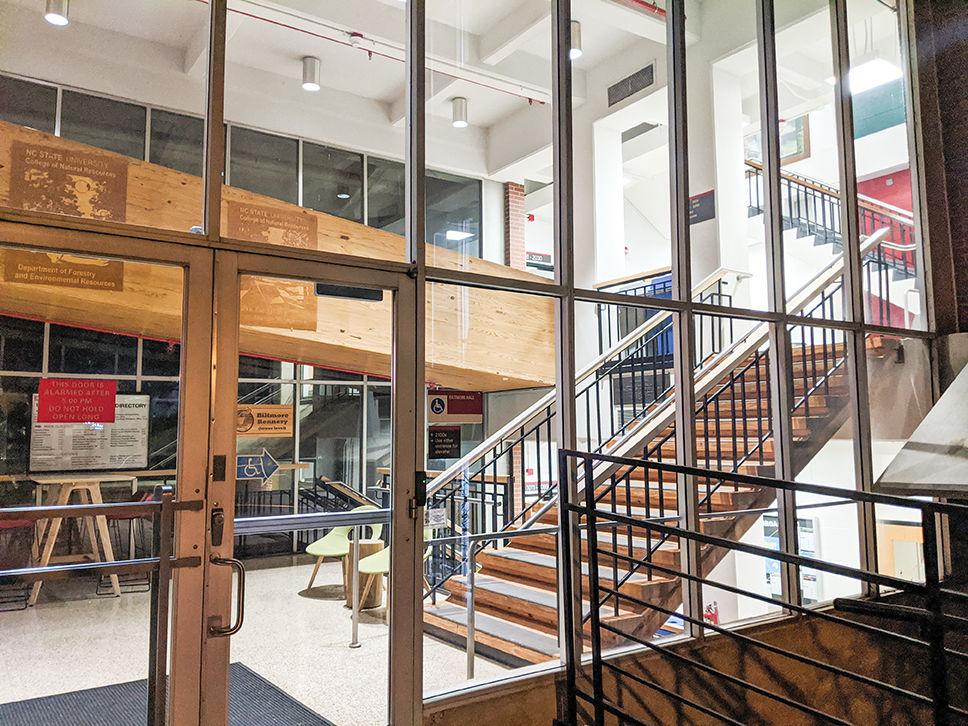NC State’s Biltmore Hall and Pulp and Paper labs have recently upgraded all of their lighting to LED light bulbs. The efforts to change all light fixtures in the building to LED commenced in February 2019, following complaints over safety issues within the hall due to poor lighting, making Biltmore Hall the second building on NC State’s campus to undergo LED upgrades, with Price Music Center being the first.
The fixtures were also changed due to high energy costs. Prior to the upgrades, about 90% of all light bulbs in Biltmore Hall were T12 fluorescent lights, which were substantially less energy efficient compared to LED light bulbs. The upgrades were completed in November 2019, and it’s estimated to have saved the university $30,000 in annual electricity costs.
Kerby Smithson, an energy project manager, and Joshua Gira, the director of Informational and Instructional Technology of the College of Natural Resources, led the efforts to upgrade Biltmore Hall.
“This lighting project is estimated to save over 400,000 kW of electricity per year,” Smithson said. “That comes out to about 136 metric tons of carbon dioxide equivalent avoided. In other terms, this is the amount of emissions from about 29 cars or 15.7 homes in a year.”
Biltmore Hall also has additional “green” features to complement the developments. These include modifications to the building’s tap water so the pipes have a slower flow to save water, and fixture-integrated sensors in classrooms that dim the lights after 15 minutes of inactivity.
However, according to Smithson, the light fixtures were from different years, making it difficult to determine which lights to use. The Robertson wing was built in the 1950s, Biltmore Hall was built in the 60s, and the Pulp and Paper labs were built in the 80s.
In addition, it was a challenge to keep costs low enough to make the upgrades a viable energy project.
“When my group energy management team looks to fund energy saving projects on campus, we want to spend that money in the most cost-effective way so that we can have the biggest impact,” Smithson said. “Lighting is typically not our best performing project, so it was a challenge to keep the costs low enough to make it still viable.”
Maintaining the cleanliness of the hall throughout the project also posed difficulties.
“When you upgrade to LED lights, you have to lift the ceiling tiles, which releases a lot of particles in the air from the ceiling that rain down onto the desks,” Gira said. “In the process, one of our greatest challenges was to keep things clean. We would do the upgrades in the evenings, and when people came to work the next morning, their desks would be covered with dirt … For future projects, we hope to just replace the fixtures themselves rather than have to lift the ceiling tiles and release debris in the process.”
The upgrade to LED lights in Biltmore Hall appears to be one of the many steps the university is taking to promote sustainability on campus. According to Gira, other sustainability efforts include the installation of a thermal energy storage tank on Centennial to store water for use during periods of high electricity costs, as well as the upgrading of a number of outdoor pole lightings to LED lights to provide better lighting and reduce energy costs. While other buildings on campus may undergo the same LED upgrades as Biltmore in the future, there is nothing in progress as of right now.








